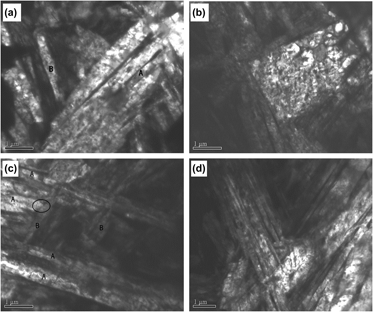Published online by Cambridge University Press: 11 October 2013

Using a combination of high-resolution dilatometric measurements and microstructural analysis, this study investigated the bainitic transformation behavior in ultra-high strength 30CrNi3MoV steel after experiencing small deformation at 850 °C (in the nonrecrystallization austenite region). Under the influence of the small deformation in the nonrecrystallization austenite region, the bainite starting temperature (Bs) raised, the bainite finishing temperature (Bf) decreased, granular bainite was promoted to form, and intersections of differently oriented bainite laths became more common in the microstructure. The increase of Bs is owing to the stored energy in distorted austenite grain boundaries, which can serve as an extra mechanical driving force for bainitic transformation during continual cooling. The decrease of Bf can attributed to the more universal intersections of bainite laths with different orientations, which can decelerate the overall growth rate of bainite. The promoted formation of granular bainite is closely related to the increase of Bs because granular bainite usually forms at relatively high temperatures in the bainite range, above upper bainite and lower bainite.